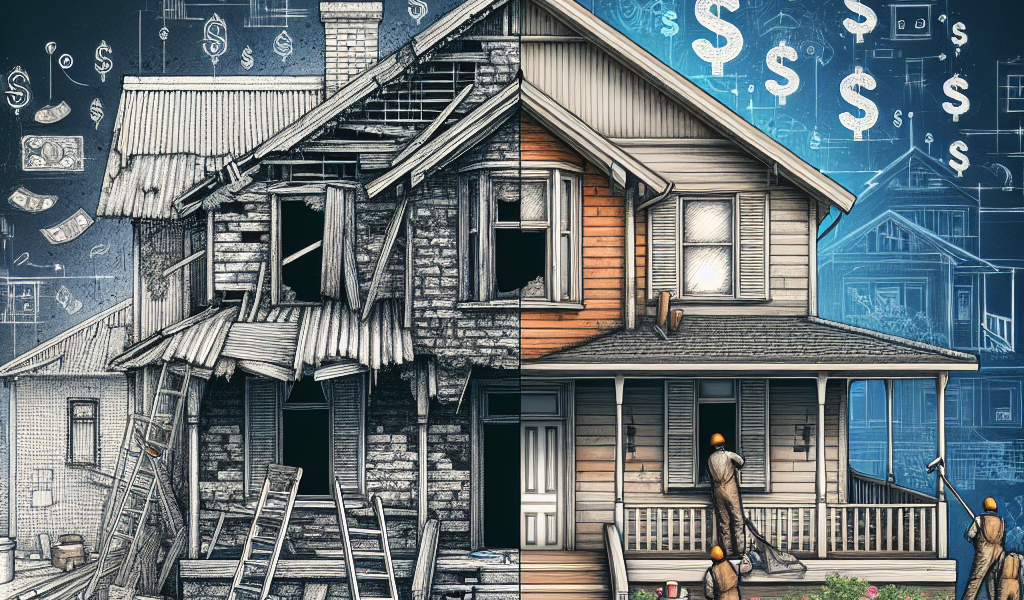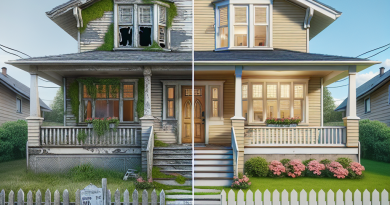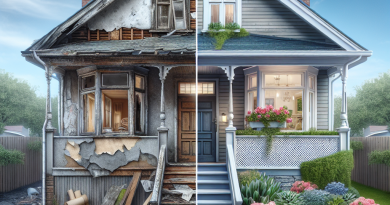Transforming Properties: The Art of Real Estate Renovation
Transforming Properties: The Art of Real Estate Renovation
Real estate renovation is an art form that requires vision, creativity, and expertise. It is the process of transforming old, outdated properties into modern, stylish homes that appeal to today’s savvy buyers. Whether you are a seasoned investor or a first-time renovator, understanding the principles of real estate renovation can help you maximize the value of your property and create a space that is both functional and aesthetically pleasing.
Assessing the Property
The first step in any real estate renovation project is to assess the property and determine its potential. Take a thorough look at the current condition of the property, noting any structural issues, outdated features, or potential areas for improvement. Consider the neighborhood, market trends, and target demographic to determine the best renovation strategy for the property.
Setting a Budget
Once you have assessed the property, it is important to set a realistic budget for the renovation project. Consider all potential costs, including materials, labor, permits, and contingency funds for unexpected expenses. It is important to stick to your budget to ensure that you do not overspend and potentially lose money on the project.
Creating a Vision
Before starting any renovation work, it is essential to create a vision for the property. Consider the overall design aesthetic, color scheme, and layout of the space. Research current design trends and consider working with a professional designer or architect to help bring your vision to life. Having a clear vision for the property will help guide the renovation process and ensure that the end result meets your expectations.
Updating Key Features
One of the key aspects of real estate renovation is updating key features of the property to enhance its appeal to buyers. This may include upgrading kitchen appliances, installing modern fixtures, replacing outdated flooring, or refreshing the paint colors throughout the space. By focusing on these key features, you can create a more attractive and functional living space that will appeal to a wider range of buyers.
Maximizing Space
In real estate renovation, maximizing space is essential to creating a functional and appealing living environment. Consider ways to open up the space, such as removing walls, adding windows, or reconfiguring the layout of the property. By maximizing space, you can create a more open and inviting atmosphere that will enhance the overall appeal of the property.
Enhancing Curb Appeal
Curb appeal is crucial when it comes to real estate renovation, as it is the first impression that potential buyers will have of the property. Consider ways to enhance the exterior of the property, such as updating landscaping, adding a fresh coat of paint, or installing new lighting fixtures. By enhancing curb appeal, you can create a more welcoming and attractive exterior that will entice buyers to explore the interior of the property.
Sustainability and Energy Efficiency
In today’s real estate market, sustainability and energy efficiency are key considerations for buyers. When renovating a property, consider ways to increase its sustainability and energy efficiency, such as installing energy-efficient appliances, adding insulation, or incorporating renewable materials. By focusing on sustainability and energy efficiency, you can create a more environmentally-friendly property that will appeal to eco-conscious buyers.
Final Thoughts
Real estate renovation is a complex and rewarding process that requires careful planning, creativity, and attention to detail. By following these principles of real estate renovation, you can transform outdated properties into modern, stylish homes that appeal to today’s discerning buyers. Whether you are looking to maximize the value of your investment property or create your dream home, real estate renovation offers endless possibilities for creating beautiful and functional living spaces.






